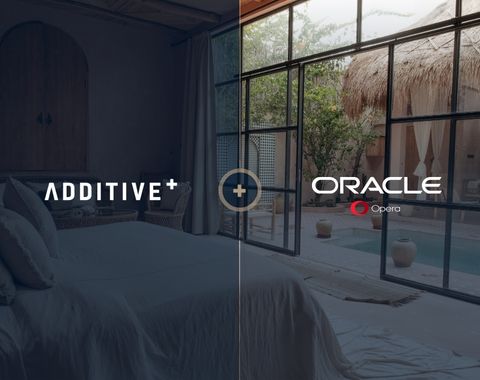
Attribution Models for Campaign Optimization

Which marketing activities truly drive booking success? Attribution models help analyze the impact of individual touchpoints on the customer journey. Learn how hotels can optimize their campaigns based on data and allocate budgets more effectively.
Most often, marketing employs a combination of different channels and strategies; among them: SEA (Search Engine Advertising), SEO (Search Engine Optimization), advertising on social media and email marketing via newsletters. Attribution models allow the analysis of marketing campaigns, providing indicators for future planning.
The aim is to identify the various touchpoints (points of contact), which the customer encounters during his consumer journey. Before a decision to purchase has been taken, consumers have typically been touched by a number of marketing tools. A potential customer may have become aware of a company or service through an advertisement on Facebook. This could be followed by a similar advertisement on Google Search. A targeted search via the Google Search Engine may lead to the website where the purchase is finally made.
Ideally, the attribution model should indicate the number of conversions that were created on the different platforms, and on which success was achieved. Such results can help identify the criteria to be set in future marketing campaigns and how the budget and resources should best be allocated.
Types of attribution models
Below are various classification models utilizing attribution in online marketing:
First-Click Attribution
This is the standard and most commonly used attribution model, in which the conversion value is completely weighted in favour of the first click (i.e. the first marketing channel with which the user comes into contact). This method is suited to branding exercises and marketing campaigns whose goal is to heighten the profile of a product or company. With first-click attribution, all other touchpoints in the consumer journey are obscured. This is why no data about the effects of different advertising media is produced and there’s no way to assess how to optimize strategy.
.webp)
Last-Click Attribution
In this model, the conversion value is fully attributable to the last channel with which a (potential) customer interacts. Last-click attribution works best if you wish to exclusively focus on conversions, thus excluding all non-converting marketing activities. As with the first-click model, this nevertheless doesn’t provide any information about the channels/platforms encountered along the customer journey, which may possibly have influenced the conversion.
.webp)
Position-Based Attribution
This model averages out the difference between the first and last click, assigning the highest values to the first and last touchpoint, while evenly distributing the values between the intermediate channels. In position-based attribution, advertising media encountered during the consumer journey is recorded and is thus traceable. However, by attributing a disproportionately high value to the first and last click, a certain margin of error still remains.
.webp)
Linear Attribution
All touchpoints are tracked and every channel visited receives equal attribution for conversion or sales. This model is suited to providing an overview of the advertising media encountered during the consumer experience, as well as for optimising the campaign as a whole. In most cases, however, the various contact points carry a different conversion weight. By assigning the same value to each channel, the individual parameters in this model cannot be specifically adjusted.
.webp)
Time-Decay Attribution
This model is based on the concept of exponential decrease. Touchpoints closer to the conversion are assigned a higher value than those that are further. Thus, channels that lead directly to the conversion as well as those having an assist function can be filtered out. However, by the time attribution has decayed, the contact points at the start of the consumer journey will have been assigned an unrealistically low value.
.webp)
Data-driven Attribution
In this model, user-behaviour is reproduced as faithfully as possible. A large volume of customer data is collected and analysed using algorithms, determining the effect of each channel and enabling real-time adjustments. Using up-to-date information producing mathematically-processed data, this model can more accurately assess individual interactions while delivering objective results. The challenge in using this model, is the availability of sufficiently large amounts of data capable of producing a meaningful analysis.
.webp)
Actual Examples from the Tourist Industry
- FTI Touristik GmbH
German tour operator, FTI Touristik GmbH, managed to improve its results through data-driven attribution. Before adopting this model, the company utilised the last-click attribution method. The results omitted valuable marketing data and the company wasn’t able to analyse the contribution of the individual channels in effecting conversions. Moreover, it lacked data about interactions between various advertising media. The data-driven attribution model provided numerous relevant insights, useful for optimization purposes, such as identifying online advertising providers most suited to new client acquisition. This model could also show how online ads interact with SEO’s, identifying the interactions between the points of contact and the marketing campaign throughout the consumer journey.
- Nordic Choice Hotels
As one of the largest hotel chains in Scandinavia with around 200 hotels, Nordic Choice has also availed itself of the data-driven attribution model. According to the "Think with Google" online platform, 38% of paid searches on the Nordic Choice Hotels website generate several clicks before producing a final conversion. An attribution model capturing all advertising media, and capable of efficiently analysing the hotel chain's campaigns, was thus needed. Data-driven attribution enabled the adjustment of its advertising budgets in real time, improving the effectiveness of its marketing campaign and resulting in increased sales.
Conclusion
Finding the optimal attribution model primarily depends on the goals of a marketing campaign. In the past, the preferred model was last-click attribution, based on the argument that users become finally convinced of the product or service only at the last point of contact. However, this model disregards all other marketing measures that may have impacted the conversion. This also applies to first-click attribution, where channels in proximity to the conversion are disregarded.To get a better understanding of the impact of the various advertising media throughout the consumer journey, it’s therefore preferable to adopt models that capture all the touchpoints. These offset the respective advantages and disadvantages of other models, enabling the most relevant information to be captured for future campaign optimization. The results produced will allow the more effective allocation both of budgets and resources for improved marketing.





.webp)







